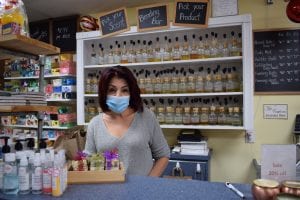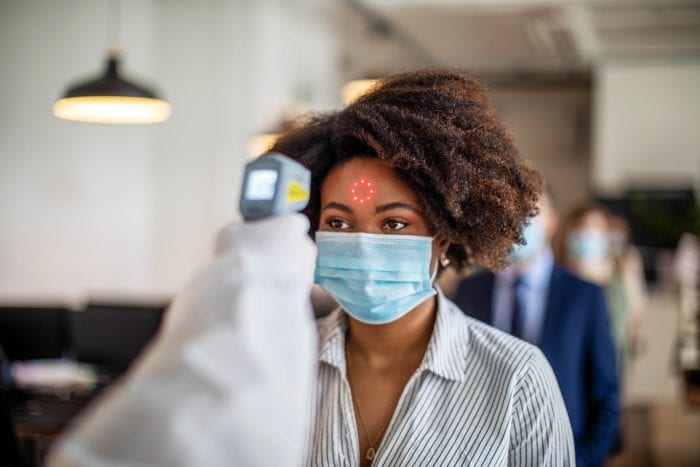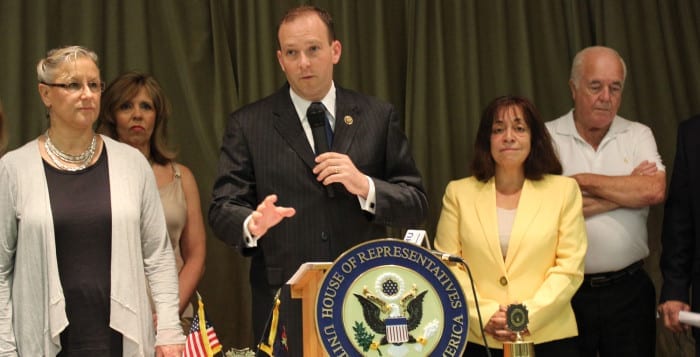COVID-19 has impacted business globally, but for local mom-and-pop shops in villages across Long Island, they have been hit twice as hard.
Between the impact of online retailers, plus big box stores, the pandemic has made it even more difficult to make a sale.
When people shop small, the sales tax goes right back into the local economy. The community depends on these stores to make the village look great, while also supporting a neighbor.
That’s why on Thanksgiving weekend, Small Business Saturday immediately followed the biggest shopping day of the year, Black Friday, with hopes to bring revenue into the smaller stores.
All weekend long in Port Jefferson village, local shop owners gleamed with hope that customers would continue their holiday shopping “small” and keeping these businesses afloat.
Here’s what some small business owners had to say:

Pattern Finders/Stacy’s Finds
128 E. Main St., Port Jefferson
Stacy Davidson, owner of Pattern Finders/Stacy’s Finds on East Main Street, said she was pleasantly surprised on Thanksgiving weekend with the amount of people shopping around.
Unique gifts can be found at the shop, including antiques, furs, evening wear and accessories.
Davidson said while the store is most known for her vintage jewelry, they also have a large selection of new pieces as well. She said that shopping at her store gives the customer a one-of-a-kind experience.
“All of the items in a store like mine you won’t find anywhere else ¬— especially online,” she said.
At her store, Davidson said that all of her items are packaged nicely, “so all you have to do is hand them over with a smile — no gift wrap needed.”
Davidson added that when people shop small, they’re supporting the community.
“I’m very encouraged from the local community who came out to support us,” she said.

Max & Millie
142 E. Main St., Port Jefferson
Joann Maguire, owner of Max & Millie, a woman’s clothing boutique nestled alongside East Main Street, said that her store gives customers a personalized shopping experience that cannot compete with a big box retailer.
“You should always shop small, not just during the holidays,” she said.
The store is known for casual, chic and trendy clothes ranging in sizes 2 to 16, accessories and unique jewelry, including a small rack of pieces from former neighbor, Susan Rodgers Designs.
Throughout the holiday weekend, Max & Millie sponsored several discounts from Friday to Sunday, completing the deal with their famous gift wrap.
“We support our community,” she said. “We’ve always been there for you in terms of fundraisers, now it’s time for you to support us.”

Fame and Rebel
415 E. Main St., Port Jefferson
Alana Miletti owns two locations of her store Fame and Rebel — one on Main Street in Patchogue, and the other on East Main in Port Jefferson village — so this past weekend was double the work as shoppers flocked in.
“Small businesses give back to the community more than a big box store does,” she said. “We employ so many community members and offer one-on-one personalization for each and every shopper.”
Throughout the holiday weekend, she offered a “shop more, save more” sale, which got dozens of people into her doors.
Known for her on-trend clothing for women, the boutiques are constantly bringing in new arrivals that will fit any style every day.
“When you support a local business, you’re also supporting your town, city and neighborhood,” she said. “Small businesses pay sales taxes to the city and county the businesses are located in, and that tax money is used to support public schools, parks, roads and sidewalks, as well as fund public service workers. Imagine your town without any small businesses — pretty scary.”

The Soap Box
18 Chandler Square, Port Jefferson
Marianna Cucchi’s store, The Soap Box, has been in the village for 13 years.
The shop, located in Chandler Square, houses hundreds of different gifts fit for everyone’s list. From homemade designer soaps, to bath and body products, to personal care, pajamas and other unique gifts, Cucchi said the last nine months have been hard and it’s going to take a while to recover.
“Shopping small is important because it supports our community and keeps our businesses open — especially after being closed over 70 days during the pandemic,” she said.
Throughout the big shopping weekend, The Soap Box offered sales to shoppers stopping by. While browsing, they’d stop to admire the collection of rubber ducks in hats sitting politely by the front window. Cucchi also offers custom gift wrapping for all orders, a complete one-stop shop.
“We need to keep small town America,” she said. “This is your community and we want to see it thrive.”

The Amazing Olive
213 Main St., Port Jefferson
For the foodie on your shopping list, Kandy Muñoz said she can provide them with a unique and tasty gift this year. The Amazing Olive has two locations, a newer location in Patchogue run by Muñoz’s son Steven, and her original Port Jefferson spot that she’s owned since 2012.
Known for their vast collection of olive oils, balsamic vinegars, wine vinegars, salts and rubs, the store can accommodate any taste.
But for this holiday season, Kandy Muñoz said personalized bottle labels and gift baskets are extremely popular this year.
“When you shop small, you’re supporting a neighborhood family,” she said.

















